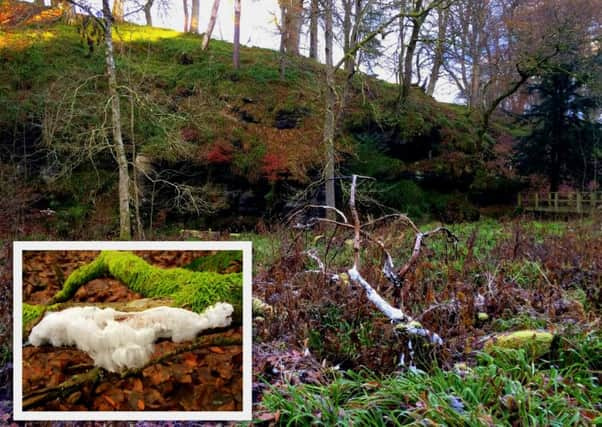Hair ice just one phenomenon in our weird and wonderful local wildlife


Last week, I received an e-mail from fellow moth enthusiast R.S. from Peebles, who had come upon a strange phenomenon, on his travels. He enclosed some pictures and asked if I had seen the likes locally. I hadn’t, but I vaguely remembered seeing an article in one of the national papers recently, describing the exact same thing in the Highlands.
The phenomenon in question is a thing called hair ice and he said it was abundant on dead wood by the North Esk downstream of Carlops. It looks like white candy floss and is always found on dead wood.
Advertisement
Hide AdAdvertisement
Hide AdApparently it is an extremely rare occurrence in this country and it needs a specific combination of conditions to form. Hair ice forms on moist, rotting wood from broadleaf trees when temperatures are slightly under 0°C and the air is humid. Each of the smooth, silky hairs has a diameter of about 0.02 mm and a length of up to 20 centimetres. The hairs are brittle, but take the shape of curls and waves. They can maintain their shape for hours and sometimes days.
A piece of wood that produces hair ice once may continue to produce it over several years.
In 2015, German and Swiss scientists identified the fungus Exidiopsis effusa as key to the formation of hair ice. The fungus was found on every hair ice sample examined by the researchers, and disabling the fungus with fungicide or hot water prevented hair ice formation. The fungus shapes the ice into fine hairs through an uncertain mechanism and likely stabilizes it by providing a recrystallization inhibitor similar to antifreeze proteins.
So there we have it. Well done R.S. for spotting it!